n. 355 - natural progression
n. 355 - natural progression
2019
Mixed media
Contemporary artwork commissioned for the RAFFLES IN SOUTHEAST ASIA: REVISITING THE SCHOLAR AND STATESMAN exhibition at Asian Civilisations Museum, Singapore
Assisted by Fiona Seow, Ong Si Hui, Amber Phang, Lau Tse Xuan
Conceived in response to Sir Stamford Raffles’ interest in natural history, n. 355 – natural progression explores the complex relationship between humanity and nature. According to a letter written from Singapore in 1819 by Dr William Jack, Raffles and his collaborators were embarked on a mission to discover and document the exotic plants in the lush tropical jungles before they “yield to the axe”. It was poignant that the original landscape of the island that Raffles was so drawn to was dramatically altered for the purpose of urban development under the British Empire.
The work comprises of two parts – the base structure and the specimens. The base structure is a set of tiered pedestals arranged in a symmetrical pyramid configuration, suggesting a system of organisation and hierarchy. On the other hand, the specimens are individually crafted from the ubiquitous tag pins, the forms evocative of flowering plants and organisms in nature. This work is not an attempt to recreate such forms in nature. Instead, it seeks to document how the specimens progress from basic to complex constructions organically and how the individual pieces are studied, classified and put together to form a meaningful system.
The installation induces a stark and sterile laboratory-like atmosphere within the gallery space, reminiscent of a controlled world protected within enclosed membranes as a way to overcome the increasing instabilities and constraints of the natural world. Such artificial environments are gradually normalised and becoming common in our current urban landscapes. We now find ourselves in a new world – a world of engineered “natural” in the name of sustainability and preservation. Humanity’s desire to control the natural world began by what the scientists were doing via collecting and documenting samples from nature even before Raffles’ time.
The notion of the natural and artificial is becoming blurred, challenged and even possibly inversed. Essentially, n. 355 – natural progression is not a representation or expression of this tension and ambiguity. Instead, it could be perceived as a store house where each recorded specimen is a product and tangible marker of human actions and interventions of a particular time, place and condition.
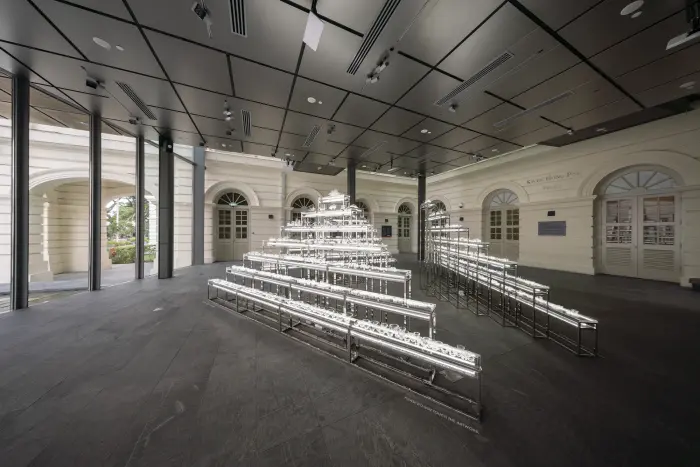

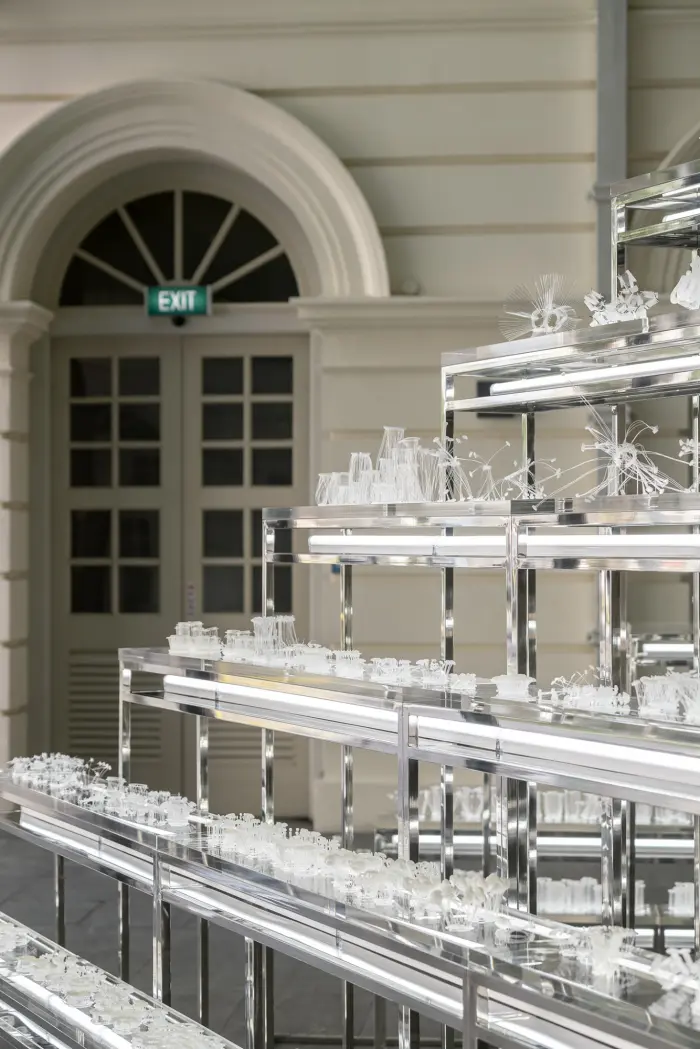

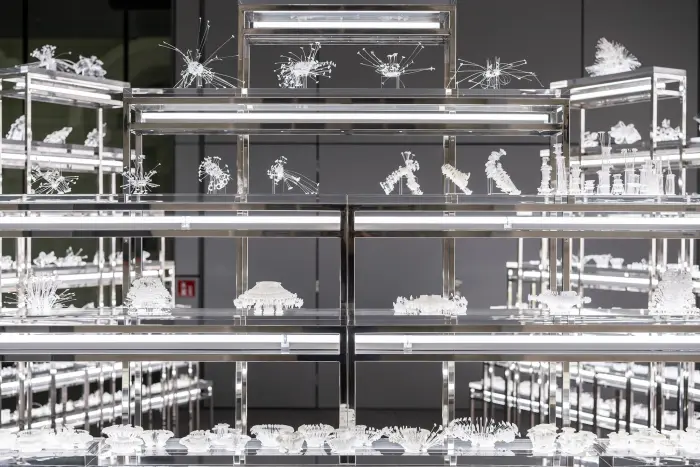
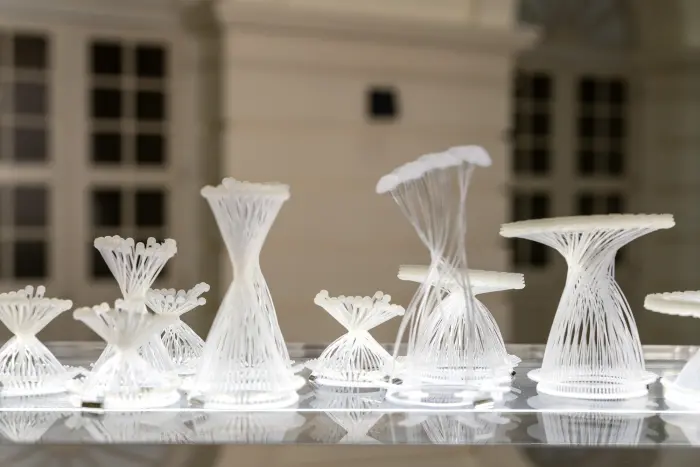
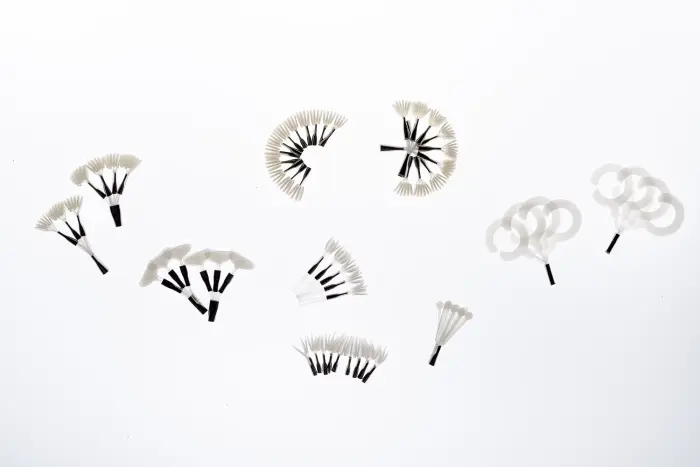

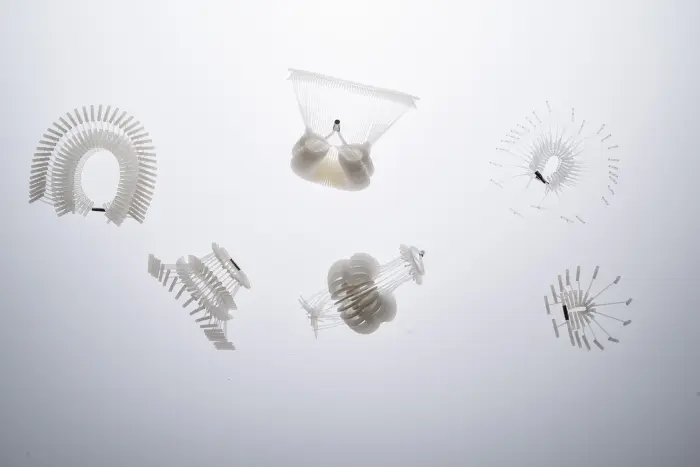

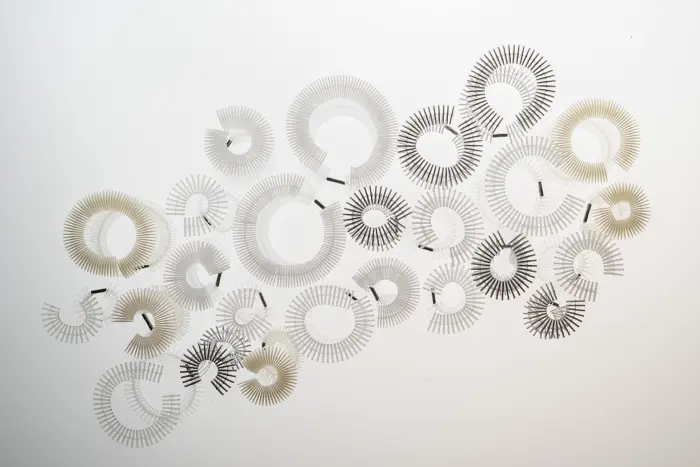
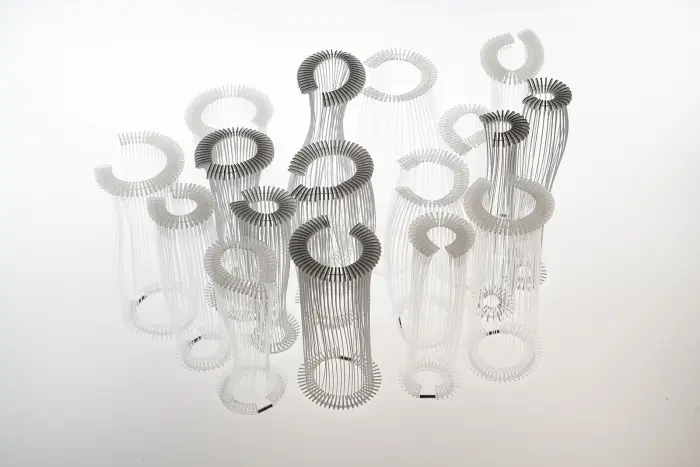
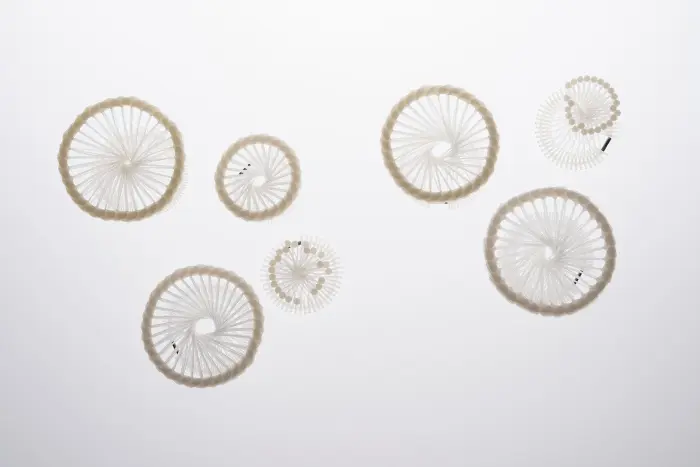
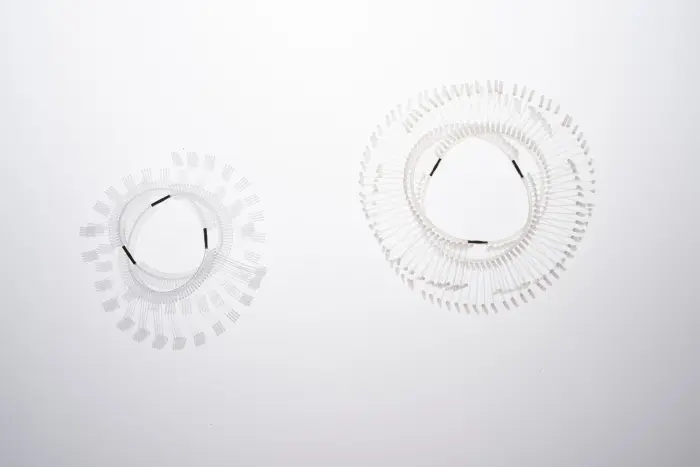
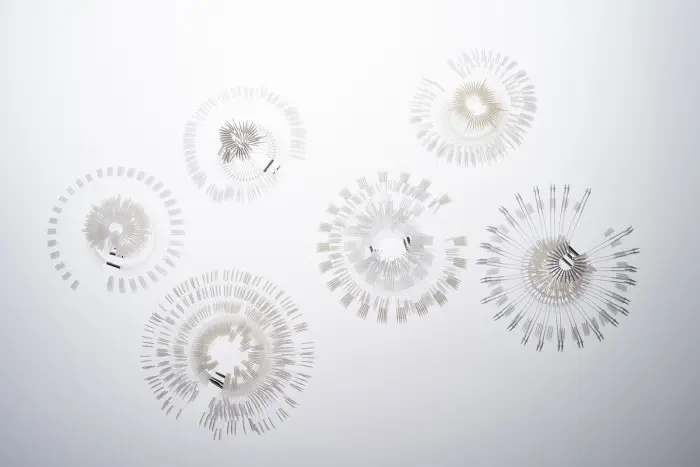
Photography by Darren Soh and Lim Weixiang